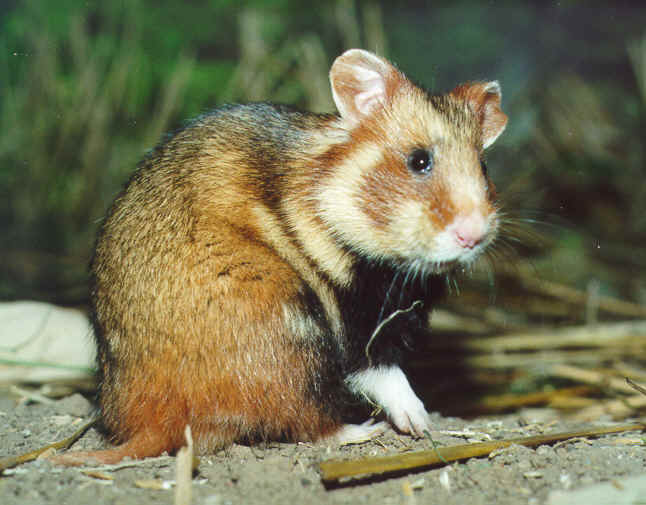The European (Common) Hamster
Kingdom: Animalia
Phylum: Chordata
Class: Mammalia
Order: Rodentia
Family: Muridae
Genus and Species: Cricetus cricetus
|
 |
The common hamster is a large, guinea pig-sized hamster found in Central Europe, parts of the Common Wealth of Independent States, and some have been found in desert regions in Asia. Just like the Syrian hamster once did, they live in large burrow systems that they dig themselves in dry, sandy oil or grassy areas.
Like our domestic Syrian friends, they hoard food in their large cheek pouches. Their main diet consists of clover, grass, beans, and a variety of other plants and seeds. They are also known to eat insects and other small rodents. They are known to be quite a pest to farmers for destroying crops.
Common hamsters are sometimes called "The Black-bellied hamster" due to the black fur on their bellies. Sometimes they are trapped for their fur. Even though they may look very pretty, they are usually not kept in captivity because of their aggressive nature.
Their breeding season lasts from April until August. The gestation period lasts around nine to twenty days, and they can give birth to four to twelve young, which are hairless, and blind. They are weaned at three to four weeks of age and are full grown at eight weeks. Females may reproduce at the age of six weeks, and can have two or more litters a year. The average lifespan of the common hamster is eight years.  << Articles
|

